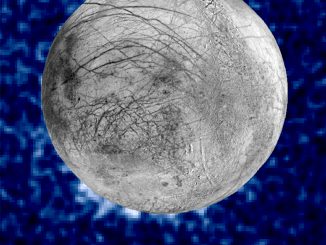
Don’t miss Jupiter’s moons and Great Red Spot during May
Despite more than seven weeks having passed since opposition, the Solar System’s largest planet Jupiter is still big and bright in the UK evening sky of May, highest in the south around 10pm BST. Find out about the phenomena of Jupiter and its moons that you can see from the British Isles for the remainder of the month, starting with a transit of Jupiter’s Great Red Spot on 19 May.









